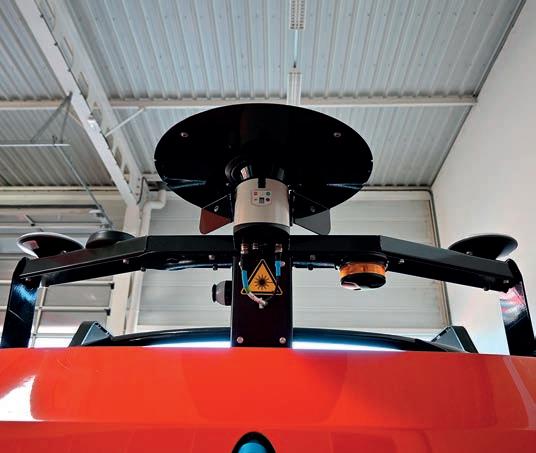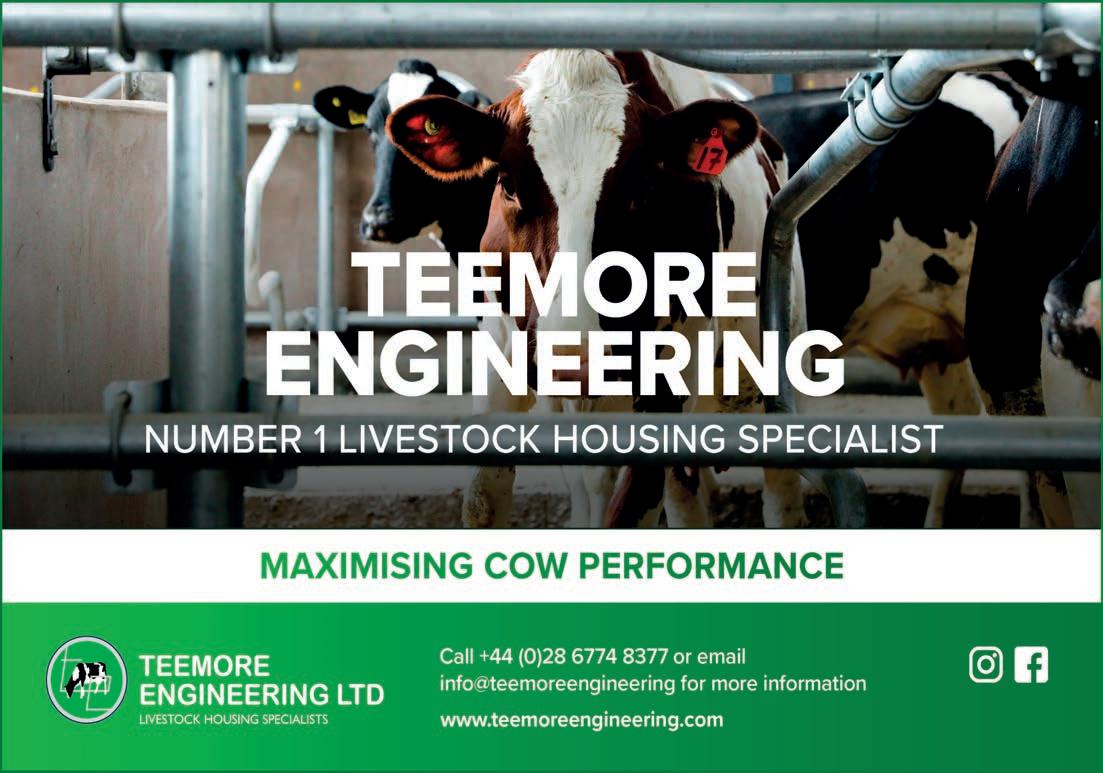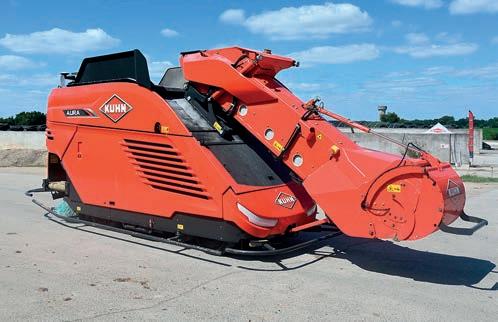
6 minute read
AUTONOMOUS FEEDING
The fully autonomous Aura is diesel-powered with a hydraulic drive.
Kuhn’s launch of the Aura has brought another option for the market of autonomous feeders, however the French machinery giant’s approach to this sector is unique in comparison to its competitive stablemates.
Other designs of autonomous feeding systems successfully rely on a monorail or steel oortrack to control the position of the unit as it navigates around the building, in addition to a dedicated feed kitchen, where the main ration inputs, straights and liquids are added to the mobile mixing tub. is design is successful at keeping the route and progress of the unit consistent and can utilise an electrically-powered mixer and delivery system – either from ba eries or elec-
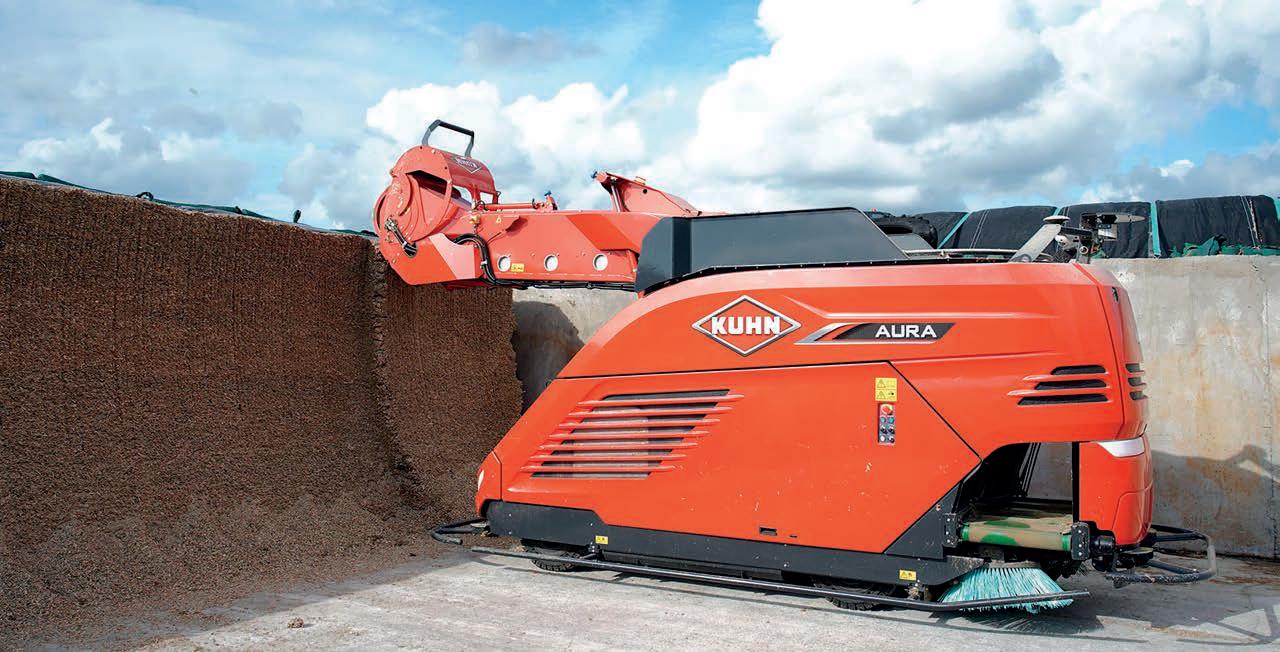
Unveiled in Nante, Western France, in July, the Aura is Kuhn’s first move into the autonomous feeding sector. Toby Whatley finds out more.
Kuhn Aura launched
A twin-auger 3cu.m mixed tub is posited at the centre of the machine. trical hook ups, however it does require some infrastructure changes to accommodate the route of the system, and may not easily be adapted or expanded as system demands or building use change. e approach taken by Kuhn uses the manufacturers existing knowledge of self-propelled feeders and has focused on creating a machine which can integrate into an existing system of silos and feed fences without speci c buildings or routing infrastructure being created.
Milling and feeding
e Aura is essentially a self-propelled mixer, albeit quite a small one measuring only 2.6 metres high and 1.9m wide, however the combination of repetitive cycles of lling and feeding out, the Aura should be capable of supplying up to 280 cows. e design uses a 3cu.m twin vertical auger mixing tub ed with a milling head and conveyor. Positioned at the rear, a discharge conveyor and twin rotary bushes dispense and push-up the feed in one pass. Inside the unit sits a 56hp Stage V Kohler diesel engine and a fuel tank su cient for a weeks’ worth of work, consuming a claimed 3.5-4 litres/hour. A fully electric E-Aura is in development.
All services on the unit are hydraulically-powered and include four-wheel steering and drive to each wheel hidden underneath the body. is gives the machine the capacity of slope climbing of gradients of up to 20%, and
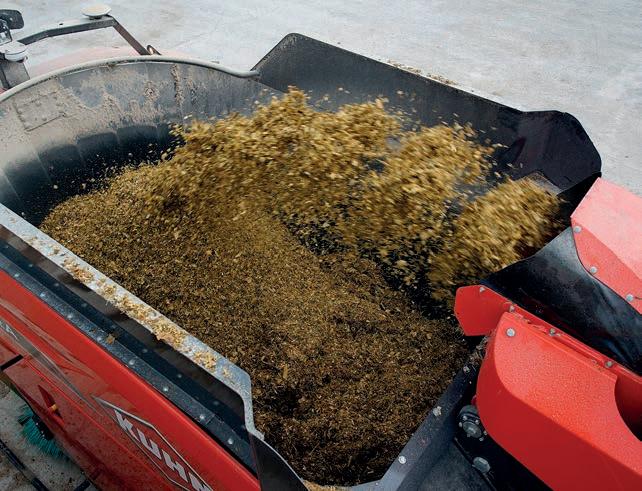
The dedicated milling head is used to load all silage and straw into the unit.
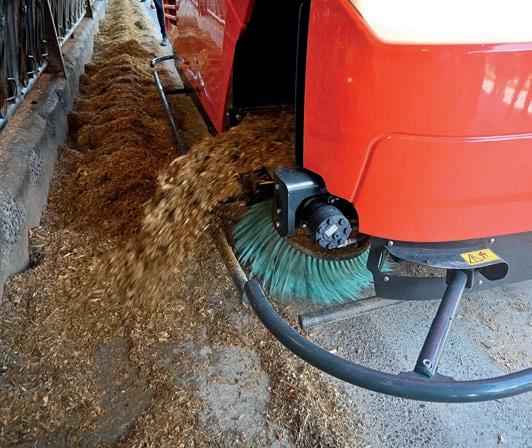
Feeding out uses a conventional cross conveyor and rotating bushes to push the feed up.
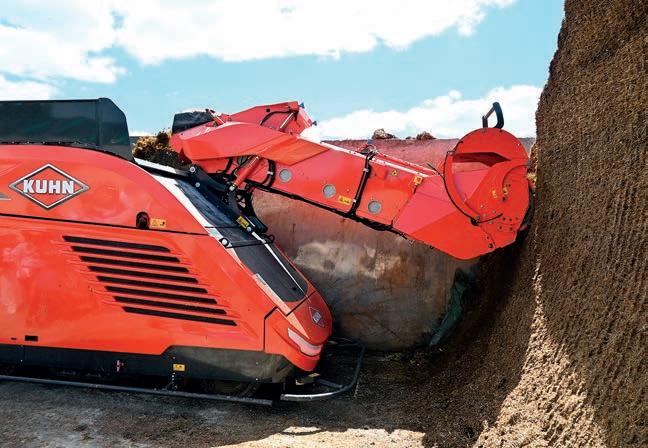
allows travel on less than perfect concrete or stabilised hardcore. A maximum forward speed of 7kph is possible when travelling between slio and feed fence, with a maximum feed-out speed of 2kph.
Filling is achieved using a dedicated milling head and conveyor mounted on a sideshi frame. e head can process a range of ensiled products in addition to hay and straw. Conventional load cells are used to measure the intake product.
Surprisingly, the unit is not ed with a metal or foreign object detection system, so considerable care needs to be taken to insure the clamp face is clear from plastic or tyres to prevent some unexpected total mixed ration ingredients. Magnets are positioned in the tub to capture any ferrous anomalies entering the mix.
Baled products require opening out and the string removed before the unit can load them. e farm used to demonstrate the product had a dedicated straw loading area, where strings were removed and the loose straw bunkered for the vehicle to collect.
Utilising the same building as the straw bunker, the loading of straights from overhead augers is achieved using WiFi-linked switches a ached to each auger motor. When in a de ned position, the Aura requests the motors to start and stop once the correct weight has been delivered.
Feeding out the product is achieved using a conventional hydraulic cross conveyor at the rear of the unit which can deliver to the le or right of the machine. Feeding takes place in reverse, with the delivery of the ration immediately followed by a rotating nylon bush to push the feed up to the fence. e volume of feed delivered is calculated by the unit based on the target weight divided by the feed distance. is is claimed to maximise the available feed area for the cows, and deliver a uniform quantity along the complete feed fence. Individual mixes and feed rates can be delivered to di erent buildings, depending on the animals being housed.
Control and safety
Prior to the Aura being delivered, Kuhn will conduct a site survey to determine the layout and routing of the feeder. A complex network of data connections is established alongside an array of autonomous vehicle warning signs, in conjunction with any structural changes to the yard, however these should be limited. Once this been completed, the responsibility of the machine to operate safely is signed over to the end user
Surrounding the machine are an array of sensors reporting the location and external information interfacing with it. e overall position of the feeder is determined using RTK GPS derived from a dedicated network and connected using two receivers at the rear of the unit. A WiFi network covering the whole working area is used to communicate with the unit and provide information updates,
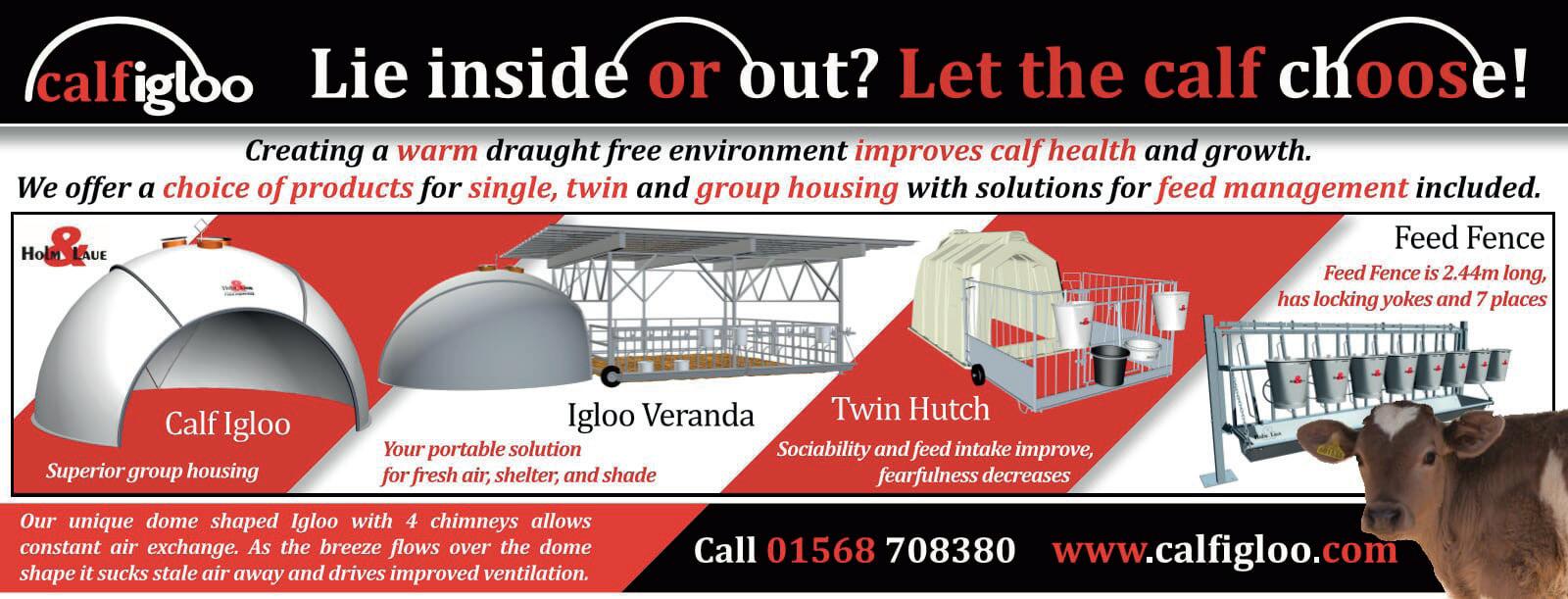
also it allows the Aura to communicate to external control modules.
When working in buildings and to identify any object in close proximity, motion sensors on multiple surfaces detect movement and xed surfaces the machine needs to avoid. A Lidar system is used to visualise the surroundings. Functioning in a similar method to sonar, Lidar uses light pulses to measure distances and create a vision of the environment surrounding it, nally nudge bars on each side of the machine will stop the unit if they contact any obstacle.
Real-time data from the Aura is managed through a PC portal which overlays the machine and its route onto a Google-derived map. is gives a visual location and function for the unit and highlights where it has been.
If the feeder encounters any obstructions or errors, it can text multiple mobile devices to alert an operator of an issue, which can either be cleared remotely, or may request a site visit to visually check the problem.
Progress around the farm is
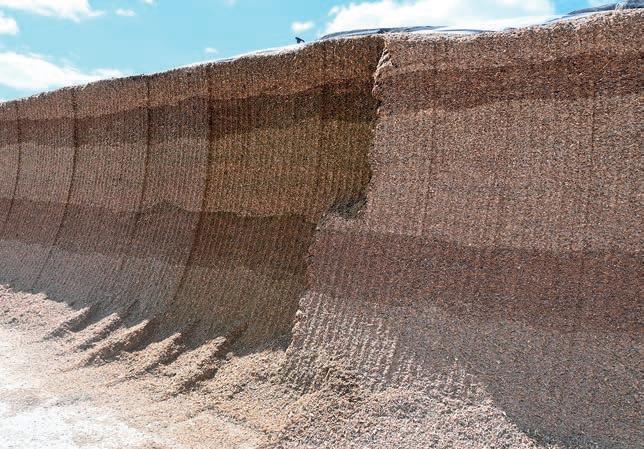
Lidar and twin RTK GPS receivers are mounted at the rear of the unit.
predictably repetitive, with the machine following the same route across the yard. is was particularly noticeable at the demonstration farm, where the unit has been running for nearly 3,700 hours over the last 12 months and le some tell-tale tyre marks on the concrete.
When working against the silage face, the unit will return to the position from where it previously lled. e incredibly precise action of the milling head creates a very clean clamp face, with an obvious step when the machine stopped. A potentially limiting factor is the maximum operating height of 4m, meaning clamps can be wide, but not high. e Aura is in its early stages of distribution with two production machines currently working in France. e infrastructure and sta expertise to install and maintain a unit is considerable and as a result Kuhn is being cautious in the expansion of the sales area with machines limited to the French market. As the manufacturers experience grows, so will the market area with the rst units expected in the UK by 2024/2025.
